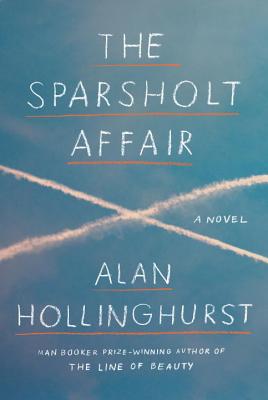 The Sparsholt Affair
The Sparsholt Affair
by Alan Hollinghurst
Alfred A. Knopf. 432 pages, $28.95
ALAN HOLLINGHURST’S novels are unusual for a few reasons. First, no two are alike. From The Swimming Pool Library (1988) to his new book, The Sparsholt Affair—with The Folding Star (1994) and The Stranger’s Child (2011) in between—each has its own ambience, tone, subject, and structure. Second, Hollinghurst doesn’t seem to be in any kind of dialogue with gay novels written in the U.S. or, for that matter, in the U.K. His subjects and topics simply differ too much from those of, say, Adam Mars-Jones or Patrick Gale to invite comparison.
The Sparsholt Affair could be said to resemble his second novel, The Folding Star, in being about artists, both real and fictional. The new book can be said to be about the effect of World War II on English society, for good and ill, just as The Stranger’s Child was about the effects of World War I. Like the latter, The Sparsholt Affairis a family novel, even odder than its predecessor because it’s about a family whose main characters are all gay.
The great joke of the title is that the “Sparsholt Affair” itself, which is the family name, happens entirely offstage, as in a Greek tragedy or a Baroque opera. We are led right up to it at the end of book’s second part, and then learn that the “affair” happened well in the past. It doesn’t even play a central role but serves rather as a leitmotif, to be brought up at various times and in several conversations as the plot progresses.
Hollinghurst quickly establishes interesting, believable voices and Jamesian “centers of consciousness” and gets them busy. Just as an almost throwaway pre-Great War poem by a poet felled in a trench in France provides a linchpin for The Stranger’s Child, in the new novel it is a pen-and-ink portrait of the title character in his youth that centers things. Illuminating one of Hollinghurst’s themes, the portrait conveys that every generation looks at art differently and for its own reasons, challenging the idea that art is “eternal.”
 What the author also does well is to establish a peculiar group of people bound together by a shared past, in this case a short period of time at Oxford University during the years 1940 and ’41. Some will go to war to die or become RAF heroes, while others will toil in intelligence factories hidden under castles. We follow their fortunes, sometimes quite loosely, up to their funerals—which serve as excuses for old pals and frenemies to gather and catch up. Hollinghurst is nothing if not clear-eyed in his view of “society.”
What the author also does well is to establish a peculiar group of people bound together by a shared past, in this case a short period of time at Oxford University during the years 1940 and ’41. Some will go to war to die or become RAF heroes, while others will toil in intelligence factories hidden under castles. We follow their fortunes, sometimes quite loosely, up to their funerals—which serve as excuses for old pals and frenemies to gather and catch up. Hollinghurst is nothing if not clear-eyed in his view of “society.”
As always, it is the writing that counts. Hollinghurst has a gift for succinctly summing things up, as in: “I was very glad to see her, but the atmosphere, which had taken on a hint of deviancy, rather changed when she came into the room. She hadn’t the benefit of ten years in a boy’s boarding school, with all its ingrained depravities.” Or, when talking about a picture book: “published before the war … not yet thirty years old but a peculiar gel of romance seemed to fix the scenes further back. … [W]hen no one was about, small boats bobbed at their moorings and no car or coach was seen on the pink and fawn ribbons of the roads.”
Because Sparsholt’s son Johnny is a major character, we see him at twelve, at nineteen, at forty, and at sixty. He becomes a portrait painter of note, which allows the author to make use of his exceptional ability to write about art. Here Johnny is restoring a small painting: “Never before had he paid such minute attention to a painting, certainly not to one of his own—he saw it decompose itself under the lens, he had a view of it not even the artist had had, although elements in the design, which the artist must have understood, refused to give up their secrets.”
Even everyday life becomes a subject for art, as in: “Johnny went out to the window, stepped out, a bit testingly, onto the thin strip of balcony, with its delicate wrought iron fence. It was curious, the little altitude above the pavement, the island of public garden with holly trees and benches, and then the road, the balcony trembling when the lights changed to amber and the juggernauts started their rumbling ascent through the low gears.” Note the abrupt sensory shift from sight to sound.
We never get a complete picture of the title character, not even from his son, with whom he maintains a complex but never intimate connection. A war hero, physically beautiful and strong to the end, a subject of scandal, a successful engineer and capitalist, his many parts never quite add up to an intelligible whole.
Felice Picano’s latest book is a memoir titled Nights at Rizzoli (OR Books).




